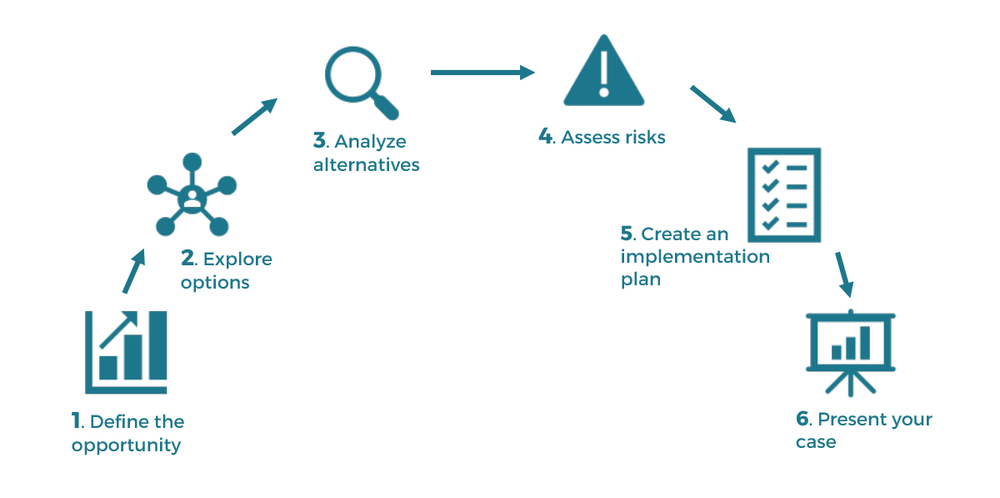How to Justify a CX Investment to Your CEO

Last updated on March 18, 2024
There are a lot of stats that showcase how critical a customer experience program is to any business’ success. Some experts feel that companies stand to lose upwards of $75 billion if they don’t deliver a best-in-class experience. Other research points to a slightly lower, but still eye-popping loss of $44 billion.
While the potential revenue losses are enough to get any CEO’s attention, many companies still aren’t making CX a priority. A study by Acquia found that while 82% of marketers feel that they deliver a positive customer experience, only 10% of customers agree with that sentiment.
Many people in your position feel like they face an uphill battle when trying to justify a customer experience program to a CEO. Here are a few ways that you can show the value of CX and make it easier for your CEO to get on board with it.
Build a Compelling Business Case for Your CX Program
Even if your CEO trusts your instincts, they probably won’t sign off on your CX program just because you think it’s a good idea. Like any new initiative, you’ll need to make a case for expanding your customer experience strategy (and getting an additional budget). That’s where the business case comes in.
A business case is a detailed presentation that compares several options and makes a recommendation. Harvard Business Review’s Publishing Staff explains that a business case is useful when you want to demonstrate the value of a new product or service. The article continues by explaining that there are six steps to building a successful case for a new initiative, including:

-
Define the opportunity. This is where you’ll unpack the situation and how your proposal will make a positive impact. Describe the situation and the business objectives your proposal will impact.
-
Explore options. Here, you’ll show your CEO the options you considered to solve your biggest business challenges.
-
Analyze alternatives. CEOs want to see that you’ve researched each option thoroughly before making your final recommendation.
-
Assess risk. What are the risks associated with your proposal? How do you plan to mitigate them?
-
Create an implementation plan. How will you implement your proposal? How will this impact teams across your organization? What resources will you require?
-
Present your case. The final step of your business case is presenting it in a formal document. Some leaders prefer PDFs, while others use slideshows to present their business cases.
Let’s take this framework and apply it to a hypothetical business case for a robust customer experience program. In the example below, we’ve done some research that you can leverage in your own business case.
-
Define the opportunity. In 2014, Peter Kriss of the Harvard Business Review reported that happy customers spend up to 140% more than those who had a negative experience. Additionally, people who have a negative experience with a service have just a 43% chance of renewing their service beyond the first year, while happy customers have a 74% chance of continuing their subscription. Finally, in a whitepaper published by Adobe, researchers found that experience-driven businesses outperform the competition in several metrics, including return on ad spend, average order value, and customer retention.
-
Explore options. Choosing the right CX vendors is a challenge because there are so many options on the market. You could either roll out a complex CX program all at once, or you could roll out pieces of it systematically. Perhaps you might consider hiring more customer service representatives before investing in CRM software or a multi-channel servicing strategy.
-
Analyze alternatives. For each option, calculate the potential return on investment, along with the cost. What gives you the biggest return for the least amount of effort. For example, implementing a new checkout page may take 40 hours, but improve average cart size by 10%.
-
Assess risk. What could go wrong? While it might be tempting to say everything will be perfect, that’s never the case. State upfront what risk factors are present and what you’ll do to mitigate them.
-
Create an implementation plan. Here, you might consider starting by meeting with important stakeholders across your organization. Once you get a better idea of their customer experience needs, you’ll be able to identify the right vendors and the appropriate technologies for your CX strategy.
-
Present your case. Does your CEO prefer PDFs or formal presentations?
This is just one piece of convincing your CEO that a sophisticated customer experience strategy would benefit everyone at your company. And with the amount of research that you’ve done (and will likely add) to the worksheet here, it will be obvious to your CEO that you believe this is critical to the business’s success.
Create a Robust Plan for Your Customer Experience Program
We touched on the idea of developing an implementation plan in the previous section of this post. But beyond that, your CEO is likely going to want to see your initial strategy for customer experience. And as we’ve seen time and time again, CX programs touch most (if not all) facets of your business, so this might be the trickiest stage of convincing your CEO to invest in it.
According to Ryan Hart, Principal Analyst at Forrester, there are three things that any CX strategy should do:
-
Flow from overarching business goals. Ultimately, your CX strategy should move key business initiatives forward. Hart says that when Microsoft CEO Satya Nadella announced the company’s new mission, it led to a complete overhaul of its customer experience strategy.
-
Guide the activities and investments of the organization. Without a CX strategy, Hart says that CX professionals often chase one customer fire after another. “A CX strategy brings order to this chaos by introducing purposeful planning,” Hart continues. “This requires CX transformation leaders to prioritize what’s most important for their customers’ experience and their business’ success.”
-
Address the difference between customer expectations and what you actually provide. At this stage, it’s really important to understand what your company is capable of delivering. You might have grand ideas for a CX program, but if you try to push your strategy through without understanding your organization’s infrastructure, your CEO will likely tell you to go back to the drawing board.
Additionally, analysts at McKinsey and Co. found that when companies view CX as a journey, they end up equipping themselves with unique insights that can impact the entire company. The report continues, “Armed with advanced analytics, customer-experience leaders gain rapid insights to build customer loyalty, make employees happier, achieve revenue gains of 5 to 10 percent, and reduce costs by 15 to 25 percent within two or three years.”
That being said, how do you get insights into what your customers want? Lumoa’s platform gives you a deeper dive into customer feedback to find specific details that can help you optimize your CX strategy. You can learn more by clicking here.
Give Your CEO Time to Make a Final Decision
Many executives live by the idea that successful companies do what the data tells them to do. But when you’re eager to launch a new CX program, it’s easy to forget that good CEOs take time to consider things before making a final decision. And once you’ve done the work we’ve outlined above, there’s one really important (and difficult) thing for you to do: wait.
In a study on the mindset of high-performing CEOs, researchers at McKinsey and Co. found that the best chief executives don’t allow one management process to foil another. Instead, “they require executives to coordinate their decision making and resource assignments to ensure that management processes reinforce priorities and work together to propel execution and continual refinement of the strategy.”
There are two things we can take away from this research. First, your customer experience program could drive serious business—but your CEO is juggling a lot of different things. If you’ve built a strong business case for CX, that work will probably not go unnoticed.
But at the same time, McKinsey’s research shows us that today’s CEOs are hiring people they trust to do their jobs and mostly getting out of their way. The CEO trusts the CFO with the financials, the CHRO with HR matters, and so on. And while he or she might be the final decision maker, it’s up to you to do the research, collaborate with other directors, and then give the CEO space to sign off on it. This is challenging, and it should be with so much research proving that CX is essential. But at the same time, the CEO’s job isn’t to get approvals from other department heads on your behalf—and even when you’re working in lockstep with your colleagues, it’s your job to get out of the way and let them do theirs.
The million-dollar question at this stage is how your CX program can generate meaningful enough data for your CEO to act on. This is exactly why we built our intelligent CX platform. Lumoa’s simple and fast AI platform sends you warning signals about customers, employees, and markets.

Final Thoughts
Many customer experience leaders might bristle at the thought of having to build a business case for a CX program. As we’ve seen in case studies over the last few years, the proof is in the proverbial pudding. And while it might be difficult to imagine any company without a robust CX program in place, the reality is that some organizations still prioritize service more than others. Although Qualtrics found that two-thirds of companies have a CX executive on staff, that means a large percentage still does not.
If you’re in a position to present a business case for a CX program to your CEO, focus your efforts on three points:
-
First, gather the data that shows companies that take the customer experience seriously see exponential growth on a year-over-year basis.
-
From there, show your CEO just how few of your competitors deliver a best-in-class experience. Once he or she understands the opportunity to set your company apart with its CX program, it won’t be long until it becomes an organization-wide priority.
-
Finally, explain how a robust CX program gives you better data to make better business decisions and align your customer experience with the company’s mission.
As your CEO considers building out your CX program, they will need some help. Find out more about how Lumoa can give your organization the insights it needs to determine the most important customer experience metrics and how to act on them.
